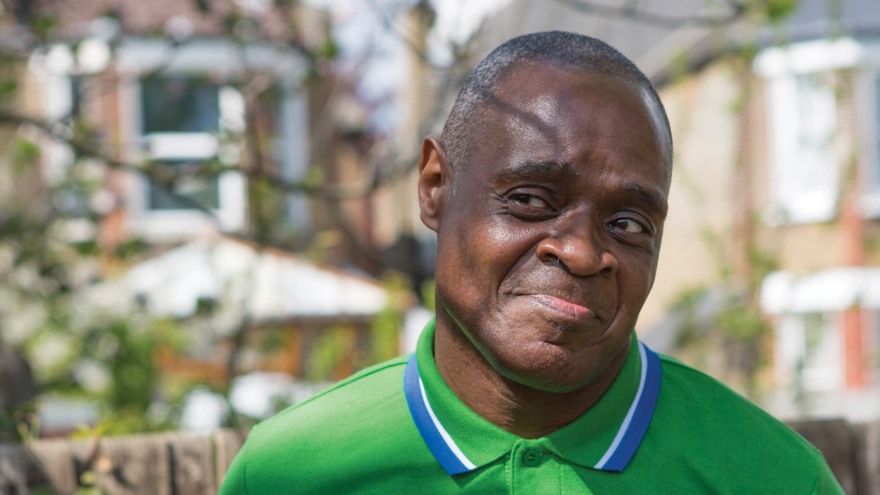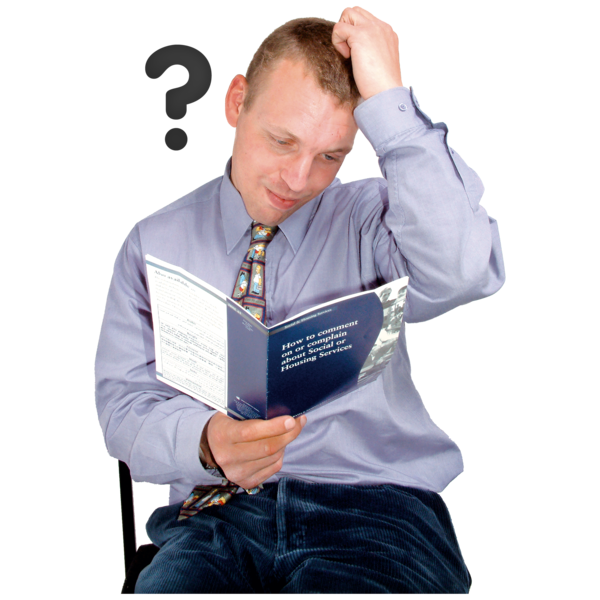Learning disabilities - Our definition
A
learning disability
 A learning disability is to do with the way someone's brain works. It makes it harder for someone to learn, understand or do things.
is a reduced intellectual ability and difficulty with everyday activities – for example household tasks, socialising or managing money – which affects someone for their whole life.
A learning disability is to do with the way someone's brain works. It makes it harder for someone to learn, understand or do things.
is a reduced intellectual ability and difficulty with everyday activities – for example household tasks, socialising or managing money – which affects someone for their whole life.
People with a learning disability tend to take longer to learn and may need support to develop new skills, understand complicated information and interact with other people.
What learning disability means
We asked people with a learning disability what learning disability means to them.
It’s important to remember that with the right support, most people with a learning disability in the UK can lead independent lives.
Learning disability support
The level of support someone needs depends on the individual.
For example, someone with a mild learning disability may only need support with things like getting a job. However, someone with a severe or profound learning disability may need fulltime care and support with every aspect of their life – they may also have physical disabilities.
People with certain specific conditions can have a learning disability too. For example, people with Down’s syndrome and some people with
autism
 Autism is a disability. Autistic people find it difficult to understand what other people think and feel. They also find it difficult to tell people what they think and feel. Everyone with autism is different.
have a learning disability.
Autism is a disability. Autistic people find it difficult to understand what other people think and feel. They also find it difficult to tell people what they think and feel. Everyone with autism is different.
have a learning disability.

Learning difficulties?
Learning disability is often confused with learning difficulties such as dyslexia, dyscalculia and dysgraphia.
Some people also confuse neurodevelopment and neurological conditions like ADHD with a learning difficulty or a learning disability, but they are not the same.
Mencap describes
dyslexia
 Dyslexia is a learning difficulty. People who have dyslexia can find it hard to read, write and spell.
as a “learning difficulty” because, unlike learning disability, it does not affect intellect.
Dyslexia is a learning difficulty. People who have dyslexia can find it hard to read, write and spell.
as a “learning difficulty” because, unlike learning disability, it does not affect intellect.
Different types of learning disability
There are different types of learning disability, which can be mild, moderate, severe or profound. In all cases a learning disability is lifelong.
It can be difficult to diagnose a mild learning disability as the individual will often mix well with others and will be able to cope with most everyday tasks. However, they may need support in other areas of their life such as filling out forms.
People with a severe learning disability or profound and multiple learning disability (PMLD), will need more care and support with areas such as mobility, personal care and communication. People with a moderate learning disability may also need support in these areas, but not definitely.
For any parent, the greatest concern will be your child's wellbeing and their future. As a parent, you can help your child by encouraging their strengths and getting the right support to help them overcome the things they find difficult. Every child is an individual with their own needs, but with the right support children with a learning disability can lead fulfilling lives in the way they choose.
What can cause a learning disability?
A learning disability occurs when the brain is still developing (before, during or soon after birth). Several things can cause a learning disability.
Before birth things can happen to the central nervous system (the brain and spinal cord) that can cause a learning disability. A child can be born with a learning disability if the mother has an accident or illness while she is pregnant, or if the unborn baby develops certain genes.
Genes are chemicals in our bodies that contain information about us, like how we look.
A person can be born with a learning disability if he or she does not get enough oxygen during childbirth, has trauma to the head, or is born too early.
After birth, a learning disability can be caused by early childhood illnesses, accidents and seizures.

Getting a diagnosis
A learning disability can be diagnosed at any time. A child may be diagnosed at birth, or you might notice a difference in your child's development during early childhood. For some people it may be many years before they receive a diagnosis, while others may never receive a diagnosis at all.
Although getting a diagnosis can be a very difficult and emotional experience, it is often the first step to accessing the care and support needed for the future.
How to get the support you need
Phone or email the Learning Disability Helpline, which is our advice and support service, for guidance and information about what support we can offer you.
Or why not take a look at our online community? This is a place for parents and family carers of people with a learning disability to share experiences, advice and support.
